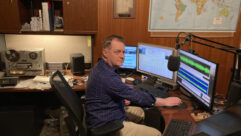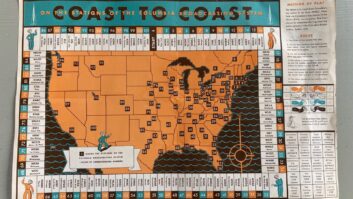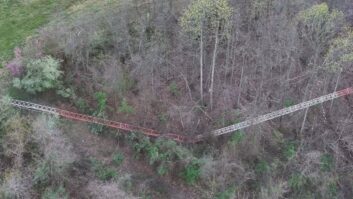
BUDAPEST — In December 2012, Hungary’s public service broadcaster Médiaszolgáltatás-támogató és Vagyonkezelő Alap (MTVA) closed all five of its regional radio studios, which made up the Régió Rádió network, thus discontinuing regional broadcasts in Hungary.
At the time István Böröcz, CEO of MTVA, said that there “was no justification for keeping the regional public service radio broadcasts operational,” since the audience of Régió Rádió was in decline due to increased competition from other local private stations. And also because, according to Böröcz, “in Hungary there is no regional identity.”
When Régió Rádió closed, MTVA launched national station Dankó Rádió on the suddenly free AM and FM frequencies. Named after the famous 19th century Gypsy musician Dankó Pista, the station broadcasts Gypsy, folk and operetta music from its Budapest studio, and is part of MTVA’s strategy to increase radio programming choices based on popular and thematic music genres.

The On-Air Studio of Dankó Rádió Dankó Rádió’s studio was the first radio facility built by MTVA within its premises, where formerly only TV production and playout activities were the norm. The Dankó Rádió studio is part of a media visitor center, where visitors can see a real media environment and experience radio and TV production workflows.
BUILDING A STATION
According to László Sütő, who was MTVA vice technical director in 2012, even though Gypsy and operetta music doesn’t top the charts, the genres have always had their place within public service broadcasting in Hungary.
In 2007, he said, an audience survey illustrated how Magyar Rádió stations, which were broadcasting a mixture of different music styles for nearly every age, hardly reached youngsters under 30. Station management decided to increase its focus on the younger audience and reformat one if its stations, Petőfi Rádió, as a pop music station. It also revamped the programs of its other stations in order to reach a wider audience. As a result, music genres such as Gypsy, operetta and folk, still very popular among elderly people, almost disappeared from the station’s offerings.

Dankó Rádió’s on-air studio is equipped with a Studer OnAir 1000 console, a Marantz MD500 MD player and a Jünger processor. Soon after Magyar Rádió merged with the TV and news agency to become MTVA, the new management decided to broaden its offering of thematic music channels by re-welcoming Hungarian folk, traditional Gypsy music and operetta back into its programming with Dankó Rádió.
“We had to build Dankó Rádió up in a very short time, because former regional public radio activities were going to cease and we had to reuse their AM and FM frequencies. Furthermore, we were in a position to gain a new FM frequency in Budapest, which would give us better coverage for the new station,” Sütő said.
The station relies on content from MTVA’s digital sound archive, where self-produced and digitized material is stored and readily available for programming. MTVA news staff produces three-minute news blocks in the broadcaster’s common newsrooms. These newsbreaks separate the thematic units (by music genre) of Dankó Rádió programming, and are automatically inserted into the program flow.
ONE STUDIO
Dankó Rádió has only one studio, made of a single, shared space between the studio itself and the technical room. In this “common room” technical equipment, staff and guests sit together during live shows,interacting with the audience. During some programs, the guests handle the entire job on their own. During the night the playout system airs scheduled content, explained Sütő.
“Not only did we have to set the studio up very quickly,” said Sütő, “but we also had a very limited financial budget. For this reason much of the studio gear came from our existing facilities,” he said.

Dankó Rádió talents (L to R) Jozsef Asboth, Claudia Erdelyi and Laslo Tarnai-Kiss, chief program editor on air in the studio. We used one Studer OnAir 1000 digital console to handle the mics, phone calls and the relevant monitoring. We selected Electro-Voice mics, Yellowtec m!ka mic arms and Genelec monitors. MTVA personnel handled the audio installation and wiring as well as studio planning and deployment.
“We made an exception for the playout system,” said Sütő. “Dankó Rádió required a playout system able to support both full-auto and manual workflows, suitable for operation by nontechnical people.” The station chose 42NET, a Hungarian-developed production and playout software suite, and 42NETMedia staff refined and adjusted the system according to station needs.
42NET software provides its own music rotation module, but MTVA utilizes a unified corporate RCS license to create the automated playlist, and the system generates a daily report of played songs to rights holders.
Dankó Rádió airs 24 hours a day, via 10 transmission sites on AM and FM and covers more than 65 percent of the Hungarian population. Like every MTVA radio program it is available as an Internet stream with no geo-blocking.
Davide Moro reports on the industry for Radio World from Bergamo, Italy.










